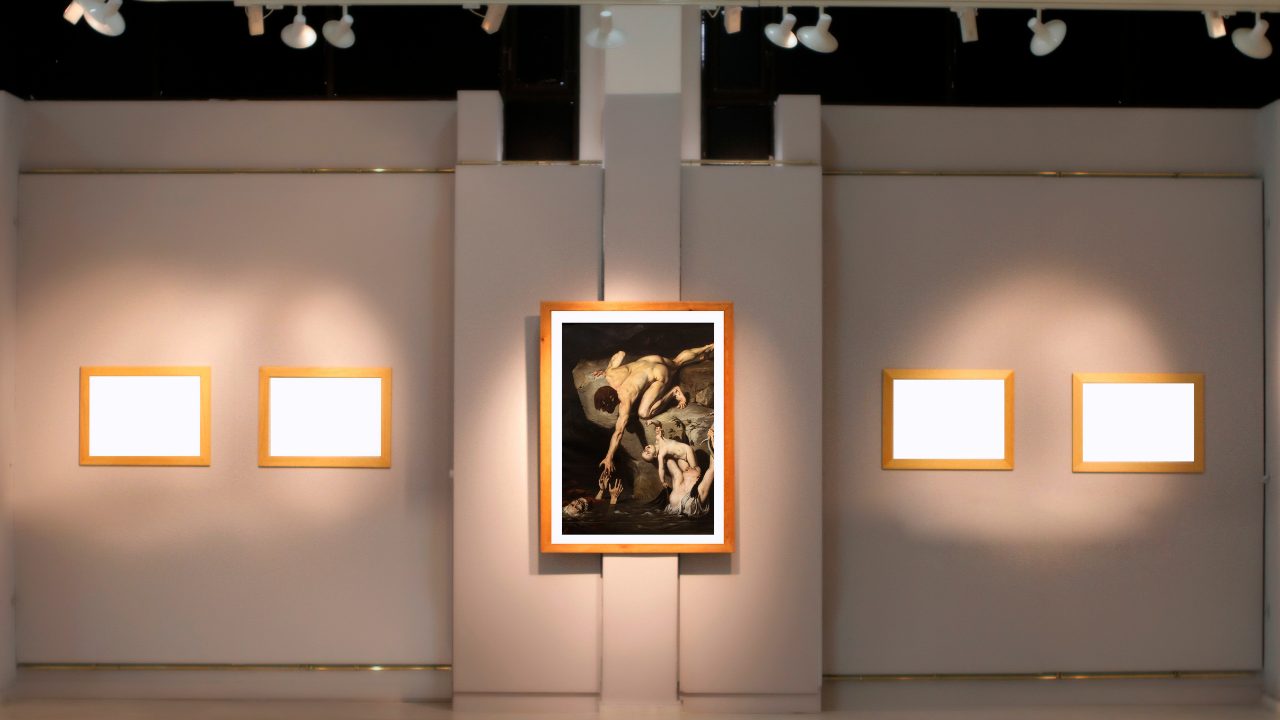
I was inspired to write this after seeing a powerful post on social media about Joseph Désiré Court’s painting, “Scene of Deluge.”
The imagery and symbolism struck a chord, reminding me of the struggles some of my patients with PTSD endure. The deluge in the painting vividly illustrates how PTSD can feel like an overwhelming flood, affecting one’s present and future.
Imagine standing on the edge of a vast, dark sea. The sky is heavy with storm clouds, the air thick with the scent of rain and salt. In the distance, you see towering waves crashing with relentless fury.
This is what PTSD can feel like—a deluge of memories, emotions, and sensations that threaten to engulf you.
In the center of the painting, a young man desperately tries to save an elderly man, a woman, and a child from the rising waters. The old man represents the weight of the past, the memories and experiences that have shaped us but can also haunt us.
For someone with PTSD, these memories are not distant; they are ever-present, like the relentless waves of the flood.
The woman, clinging to the young man, symbolizes the immediate struggle for survival. She is drenched, her face etched with fear and desperation.
This is how many of my patients describe their daily lives—an ongoing battle to keep their heads above water, to not be overwhelmed by the past.
Then there’s the child, held high above the waters. This child represents the future, the part of us that remains hopeful and untainted by trauma.
But in the midst of a deluge, even the future seems precarious. The child’s vulnerability reminds us of how fragile our hopes and dreams can be when we are drowning in the aftermath of trauma.
As a mental health professional, I often see how PTSD keeps people stuck in their past traumatic experiences. It’s like trying to swim against the current. Each stroke is exhausting, and progress feels impossible.
The floodwaters are the intrusive thoughts, flashbacks, and nightmares that invade the present, making it difficult to focus on the future.
The smell of rain and the sound of thunder can trigger memories of a traumatic event, pulling someone back into a moment they desperately want to forget.
The sensation of being soaked to the skin mirrors the emotional saturation that people with PTSD experience. They are drenched in their trauma, unable to find dry ground.
But just as the figures in the painting are not alone, neither are those struggling with PTSD. The young man represents the support system—the therapists, friends, and family who reach out a hand, offering help and hope. It’s crucial to have someone who can provide a lifeline, a way to navigate the stormy seas.
In therapy, we work to find ways to manage these overwhelming feelings. We use grounding techniques to help patients anchor themselves in the present, much like finding a piece of solid land amidst the flood.
Mindfulness exercises can be like a break in the storm, providing moments of calm and clarity.
We also explore the stories of the past, much like charting the course of the flood. Understanding where the waves come from can help in finding ways to calm the waters. It’s a process of integrating the past into the present, so it no longer feels like an ever-present threat.
But recovery from PTSD is not just about surviving the flood; it’s about rebuilding after the waters recede. It’s about reclaiming the future, represented by the child in the painting.
This involves finding new meaning and purpose, creating a life where the past does not dictate the present or the future.
Imagine standing on that shore again, but this time the storm has passed. The air is fresh, the sky clear. The sea is calm, its surface reflecting the sunlight. This is the hope we strive for in therapy—the promise that the flood will not last forever, that there is life beyond the storm.
Every time I see “Scene of Deluge,” I am reminded of the resilience of the human spirit. Despite the overwhelming odds, the figures in the painting fight to survive, to protect each other, to find hope.
This is the journey I encourage my patients to take. It’s not easy, and the waters are treacherous, but with support and perseverance, it is possible to emerge from the flood.
If you or someone you know is struggling with PTSD, remember that help is available. You do not have to face the deluge alone.
Reach out, seek support, and take the first steps towards healing. The flood may be powerful, but so is the strength within you to overcome it.
Together, we can navigate these waters and find a brighter, more hopeful future beyond the storm.
Make today your masterpiece!
Florina
Get My Blog Posts Right in Your Inbox Every Week
Make your mental health a priority. Receive tips and strategies for living well – mentally, physically, and emotionally – every week.
Get My Free Guide: 7 Cheap, Simple Strategies for Boosting Your Brain Performance
Better focus – clearer memory – faster cognition – more mental clarity – improved intellect…
Your brain is capable of beautiful things. If you don’t think you’re getting the most out of your cranial supercomputer, you can reap the benefits of these 7 simple strategies for the low, low price of “free.”